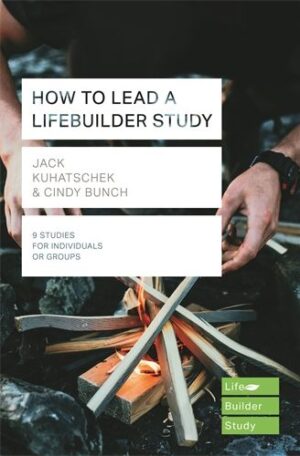



The moment has arrived. It’s 6:30, and the meeting begins at 7:00. Don’t panic. Instead, calmly take a last look around the room.
You want to create a comfortable setting for the discussion. If possible, choose a meeting space that is informal and attractive, such as a living room. Arrange the seats in a circle rather than rigid rows so people can have eye contact with each other. Make sure the room is well lit and the temperature is comfortable. Offer people refreshments, such as coffee, tea or soft drinks. (This can be done at the beginning or end of the meeting, or both.) You could pass around a bowl of popcorn for those who want to nibble. Have extra Bibles or printouts of the Bible text on hand. You might have an extra copy of the guide ready in case you have a visitor or a forgetful member.
Begin promptly at the announced time. If you wait for people to gather, they will acquire the habit of being late. Plan the early minutes carefully so they will be interesting and profitable to those who are prompt but not so crucial that latecomers will be hopelessly lost.
One way to deal with lateness is to announce that the group will gather at 7:00 so people can hang up their coats and get a cup of coffee. But also tell everyone ahead of time that the study itself will begin at 7:15. Then start the discussion promptly at the announced time.
Make sure everyone knows each other. When group members are open with each other and relaxed in personal relationships, dynamic discussion and effective learning usually take place. When members are uneasy with one another, both the discussion and the learning process are hindered. After those present have been introduced to one another, address people by name to help others remember names.
Each study begins with a group discussion question to get people talking. However, you may want to do an icebreaker before that, depending on how well people know each other and how long you’ve been together. The Small Group Starter Kit (IVP, 1995) has lots of ideas in this area. Sometimes the group discussion section may serve as an icebreaker activity, so see what is suggested there and in any corresponding notes.
Early in your meetings together it will be important to take time each week to get to know each other. As time passes, people will connect and reconnect naturally as they come in and get ready for the study so you won’t need a fun game to make this happen.
To illustrate how a LifeBuilder works, we are going to walk through an actual LifeBuilder study. It’s study one of God’s Word. The study title is “Longing for Christ.”
The first paragraph or two in each study is an introduction designed to pique the group’s interest. The first box on page 23 shows the introduction to “Longing for Christ.” You can read the introduction aloud as it is written or ask a group member to read it. Or if you prefer, you can summarize the introduction and study theme briefly in your own words, drawing on (but not quoting verbatim) the purpose statement for the study found in the leader’s notes. Here is the purpose statement for “Longing for Christ”:
INTRODUCTION God’s Word is alive. We experience the power of the living Word when we read Scripture and are moved to follow its teachings or when we study the Bible with others and discover new truths about faith. And when we are able to encourage others through the promises of Scripture, or—perhaps most importantly—when the eyes of seekers are opened to see the meaning of the biblical account of Christ’s death and resurrection, we experience the living Word.
PURPOSE To discover how we meet Christ in the living Word of Scripture.
Sometimes the introduction is a personal anecdote from the life of the guide’s writer. If you prefer, you can substitute your own story or something that you know will connect with your group. But it’s also fine to use these anecdotes just as they are written.
What you are trying to do is to draw out a key theme from the study without giving away too much. The introduction should get the attention of the group members. And it may expose a personal need. If people feel that the passage will be speaking to a real concern or lack in their lives, they will be much more eager to study it.
The introduction opens up a question. It doesn’t provide the answers.
Next you will read the group discussion question. It is designed to help the group members to warm up to each other. No matter how well people may know each other or how comfortable they may be with each other, there is always a stiffness that needs to be overcome before people will begin to talk openly. Here’s the question from our sample study.
GROUP DISCUSSION
When and how has Scripture come to life for you?
Whether it is a question or two or an activity, this part of the study is designed to get people thinking along the lines of the topic. Most people will have lots of different things going on in their minds (dinner, an important meeting coming up, how to get the car fixed) that have nothing to do with the study. A creative question will get their attention and draw them into the discussion.
This question can also reveal where our thoughts or feelings need to be transformed by Scripture. This is why it is especially important for the group not to read the passage before the opening group discussion question. The passage will tend to colour the honest reactions people would otherwise give because they are of course supposed to think the way the Bible does. Giving honest responses to various issues before they find out what the Bible says may help them see where their thoughts or attitudes need to be changed.
Although you may want to drop icebreakers from your small group meetings as time passes, you will always want to take time for the group discussion question or activity. These few minutes will set the tone for the rest of the study.
The personal reflection section is designed for individuals studying on their own. It is generally a question for thought or a topic for prayer. Here’s the reflection from our God’s Word sample study.
PERSONAL REFLECTION Spend some time thanking God for what he has taught you from Scripture thus far.
Some groups like to take a few minutes of quiet for each member to complete this section on their own. Simply allow three minutes or so of silence, then ask people if they want to talk about what they experienced during this time—no pressure—and move on to the next part of the study.
Depending on the personal preferences and comfort level of your group with silence, you might like to try this. It can help people to stop and quiet themselves in the midst of the busyness of life in order to be more prepared to focus on the Scripture. It can help people to learn disciplines of silence and reflection in their own lives. This may be something you want to try only after your group has been together for a while.
This will be a good point at which to offer a brief prayer for your group. It will prepare the group to hear and receive the Scripture. Though it’s always nice to draw in group members, it may be appropriate for you to pray since you will have your hopes and goals for the study in mind. Ask the Spirit to be present and to reveal the truths of the Word to you. Keep it short here and plan to allow a longer period for group prayer at the end of the study. Prayer will also help the group transition from the introductory time to the text at hand.